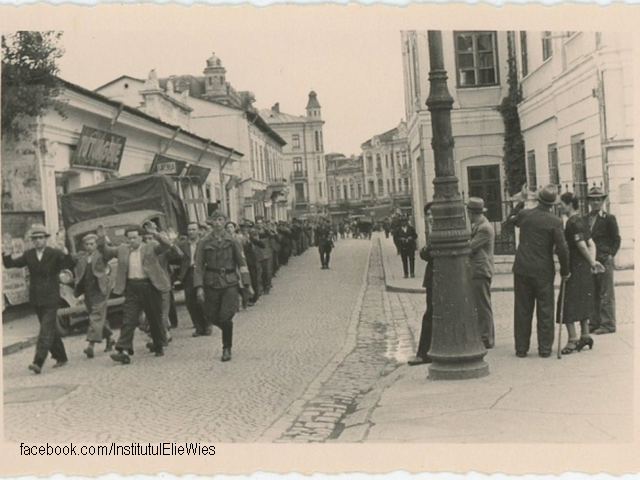75 years since the deportation of the Jews in Northern Transylvania
In the spring of 1944, the Hungarian authorities in Northern Transylvania started sending the Jewish population to the ghettos.

Steliu Lambru, 23.09.2019, 13:17
Commemorations are meant to remind the future generations things that happened in the past, when previous generations took disastrous decisions that led to collective tragedies. Commemorations should serve as lessons, in order to make sure such atrocities will never happen again.
The commemoration of 75 years since the deportation of the Jews in Northern Transylvania to Nazi extermination camps is something that must be constantly reminded, so that the chances for the Holocaust repeating itself should be eliminated. The European Jews paid a very high price for the criminal fantasies of Fascism, for the illusion of a better society. 150 thousand of them were from Northern Transylvania, a province annexed by Hungary on August 30, 1940 and mostly inhabited by Romanians.
In the spring of 1944 Hungarian authorities started to send the Jewish population to the ghettos. Hitler was losing trust in the totalitarian regimes in Hungary and Romania exterminating the Jewish population and decided to take the matter into his own hands. That meant persecuting the Jews even more. After being forced to wear a badge in the form of a yellow star as a means of identification and subjected to all kinds of humiliation, after losing all their civil, political and economic rights under a racial legislation, the Jews were now forced to leave their homes.
Marius Popescu with the Wilhelm Filderman Centre for the Study of the History of Romanian Jews, tells us how the deportation of the Jews in Northern Transylvania, at the time under Hungarian occupation, unfolded:
“The process of sending the Jews to the ghettos started on May 3, 1944. Something that took the Western countries around 2 or 3 years to accomplish, it only took one month and a half in Northern Transylvania. This shows just how eager the German and Hungarian authorities were to exterminate the Jewish population.”
Marius Popescu tells us how the ghettos were set up in the towns of Northern Transylvania:
“There were ghettos in Oradea, Cluj, Dej, Satu Mare, Sfantu Gheorghe, Targu Mures and Simleu. The Jews from the surrounding villages used to be sent to ghettos in the county capitals. However, the ghettos were not like the usual ones, in which the Jewish population was forced to live in misery behind high walls, such as the ones in Poland, for instance. The ghettos in Northern Transylvania were transit ghettos, where the Jews spent 2 or 3 weeks. The word ghetto is very much used in this context but I would not use it here. A ghetto was located on the outskirts of a city or town where the Jews were crowded together, in a very small space. The Jews accounted for around 30% of Oradea’s total population so roughly 30 thousand Jews had been sent to the ghetto. In Cluj, their number stood at 18 thousand. The conditions in the ghetto were terrible, there were no toilets, food was given once a day and people lived exclusively on what they had managed to bring from home. On May 3, 1944, when they were surrounded by the gendarmes, they had been given half an hour to prepare. The ghetto was surrounded with wire.”
Elie Wiesel, a Nobel laureate for peace born in Sighetu Marmatiei, spent some time in a ghetto before being sent to Auschwitz. Eva Hyman, a 13-year old girl sent to the gas chamber in Auschwitz, nicknamed “Anne Frank of Transylvania”, had transited the ghetto in Oradea. Nyiszli Miklos, a physician from Oradea, was first sent to a similar ghetto, then sent to Auschwitz but had the huge chance to survive. These are only three of the people who experienced life in the ghettos of Northern Transylvania and who left written proof about it.
Marius Popescu: “Once in the ghetto, the Jews were humiliated, mocked and even murdered. We know what the Dreher brewery meant — it was the place where the Jews were beaten, given electrical shocks, tortured to say where their fortune was, or who was keeping it for them. There were survivors who have confessed to what happened, even a few survivors from Auschwitz. I would like to mention another two names — Otto Adler and Oliver Lustig. The latter has published documents, included in two books, The Ghetto Trial of Northern Transylvania. We have detailed information about what happened inside these ghettos, the atrocities.”
75 years ago, life ended for 150 thousand Jews in Northern Transylvania occupied by Hungary. Their confessions, however, lived on.
(Translated by Elena Enache)






























